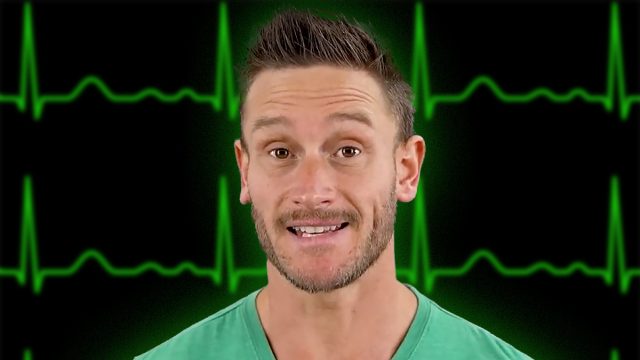10 Cardio Mistakes I Will Never Make Again After Losing 110 Pounds
Are you doing lots of cardio but failing to lose weight? Thomas DeLauer (@ThomasDeLauerOfficial) is a YouTuber with over 3.68 million subscribers who share content about how to improve your life and who lost over 110 pounds by maintaining a healthy diet and exercising. In one of his viral videos, he reveals that he used to make a lot of cardio mistakes that prevented him from losing weight.
"When you're using cardio specifically for fat loss, there's different rules that you need to follow. Cardio is great for overall health benefits. Cardio is great when it comes down to longevity, but when you're looking at fat loss specifically, there's a few things you need to pay attention to," he says, revealing "the most critical cardio fat loss mistakes that people make."
The Zone Creep
The first mistake is something he calls the zone creep. "The zone creep is when you start doing cardio, but you start enjoying cardio so much that you slowly start increasing your intensity. Now, if you were training for performance, this would make sense. You want to improve your performance, and you want to be pushing it harder. But the zone creep is where you start creeping into zone four, sometimes even zone five," he says, adding that for weight loss, you should try and stay in zone two cardio range, "which means that you can carry a conversation on with somebody while you're doing your cardio," he says.
Not only is it "great for just sustainability with your cardio, but it also allows you to utilize fats as the fuel source during your cardio better. When you creep into zone three, you're utilizing carbohydrates and fat, so you're okay in that zone. But what happens with me is I get into running, and then I start wanting to push my times, and I start wanting to get faster, and I start wanting to do this, and it becomes a problem. Next thing I know, I'm looking at my Oura and my Whoop results, and I'm in zone four the whole time. This is great for performance but is not nearly as good for using fat as a percentage of your fuel. So try to keep your intensity down to a rating of perceived exertion of maybe six on a scale of one to 10. That way, you could carry on a conversation or do the sign test. If you're running, you could literally sing to yourself without getting out of breath. That's a good indicator," DeLauer says.
Not Increasing Your Protein Intake
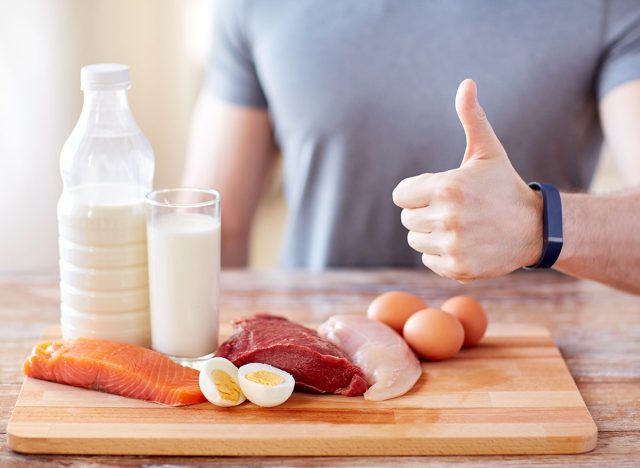
The second mistake? Not increasing your protein more when you add cardio. "For example, you eat 200 grams of protein per day when you're resistance training, but then you add an hour of cardio in, you should be adding more protein in, and people don't typically factor that in," he says.
"They think resistance training is all that triggers a demand for protein, but when you do cardio, you absolutely trigger a demand for protein. And arguably, it becomes even more important because with resistance training, you're trying to add muscle typically, or you're trying to get stronger with cardio. You need to add that protein to prevent the muscle from being wasted. So when you add cardio in, add more protein." A general rule of thumb? "For every 30 minutes of cardio, add another 30 grams of protein," he says.
Not Cross Training
The next one is not cross-training. "This is so important, especially for fat loss, and that's just the rule of efficiency. If I go out and I go for a run and I run for the next three weeks, I'm going to get really good at running, and what's going to happen is I'm going to develop efficiency," he says.
That's the entire idea of training. But we're not just trying to train. We're trying to trigger adaptation. So, I always try to make sure that my cardio seems adequately difficult. If running becomes easy, then I switch to the bike. If the bike becomes easy, then I switch to the rower. If the rower becomes easy, then I switch to the skier. I'm always kind of rotating it up, and it's a really important thing to remember."
RELATED: I Lost 70 Pounds, "Got Rid of Cellulite and Fat and Toned My Legs" with These 3 Simple Steps
Dehydration
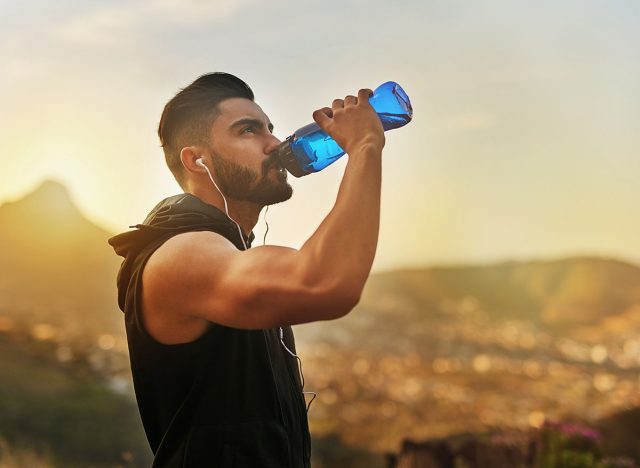
Next up, not drinking enough water. "If you're training outside, one of the fastest ways that you're going to slow down your performance is becoming dehydrated. So whether that means you're hydrating before your workouts or hydrating after, I always recommend increasing your sodium levels. This is a really important thing, as you have more intracellular water and more onboard water for your activity. One of the reasons people get so sore is because they end up quite dehydrated, and they don't even realize it. So dehydration plays a critical role in delayed onset muscle soreness and our overall recovery," he says.
Avoiding Upper Body Cardio
The next mistake is avoiding upper-body cardio. "Upper body cardio is one of the most powerful ways to get your heart rate up, especially if you're doing interval training. So, if you're doing steady-state cardio, doing arm-type work might be a little bit different. But if you're trying to opt for HIIT to get it done faster, doing upper body movements is a huge, huge cheat code," he says.
"The reason is that you have more of what is called peripheral resistance. That means when the heart is pumping blood into the upper body, there is less overall ability to receive that blood than when the legs are pumping blood. You have big arteries in the legs. So when your heart's pumping, it can quickly drain blood into the legs. With the upper body, it has to fight resistance from the periphery. What that means is less activity gets your heart rate up more. So if you're trying to do interval training, doing something like the rower where you use a lot of arms or doing battle ropes where you use a lot of arm movement is a tremendous way to get the heart rate up super fast in 20, 30 seconds and then recover. It's totally missing out by not doing it. We always think of cardio as using our legs, jumping, running, biking, or whatever, and using our arms."
Cardio Taking Away From Resistance Training
"This next one is one that people really mess up on a lot, and that is doing so much cardio that they start taking away from their resistance training," he says.
"If we run or we bike so much to the point that we're sore, it's counterproductive because then we cannot do the resistance training as well. And resistance training is going to be the bigger driver for so much of our metabolism. So you're putting the cart before the horse here by trying to do more cardio to burn fat, but you're ultimately missing out on what's really going to allow you to burn fat long term. So make your cardio adjustments so that you're pushing it, but not so much that it's detrimental to your actual resistance training."
Overeating
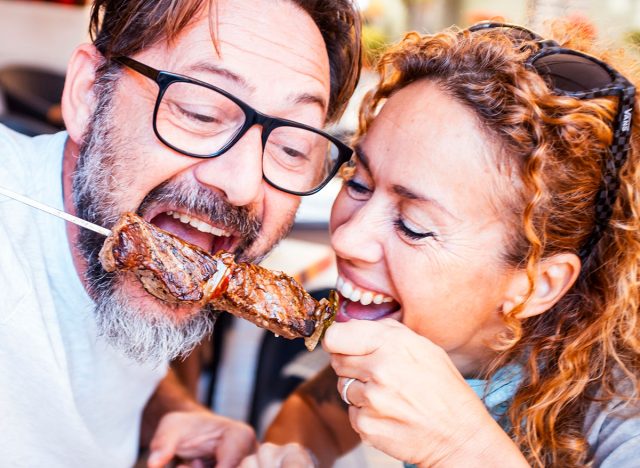
Next up, overeating, which is "really hard to manage unless you occasionally track food, which I don't recommend a lot of people do, because it becomes rather orthorexic and obsessive and it can cause a problem," he says.
"Maybe doing it from time to time when you do cardio triggers a pretty serious ghrelin response. What that means is over the subsequent hours after doing cardio, you're a lot more hungry than you normally would be, and your hunger is going to be much more, much greater than the calories that you actually expended with your cardio workout. If I go out and I run and I burn 600 calories, I'm going to come back, and I'm probably ravenous for like three or four hours. It's way, way, way too easy for me to overeat more than 600 calories just by the sheer hunger episodes. So you have to be aware of that, and there's no way to override that other than just your prefrontal cortex and being able to manage, but just be very aware of it because just 'cause you added more cardio doesn't give you a license to eat whatever you want."
RELATED: I'm 90+ and These 9 Fat-Blasting Habits Keep Me in the Best Shape of My Life
Not Increasing Antioxidant Intake
Next up is one that "totally goes by the wayside," and that is not increasing antioxidant intake. "When you resistance train, sure you cause stress to the body. We always think of it. We always think like, okay, I'm lifting weights. I'm tearing muscle fibers and rebuilding them a hundred percent. But when you're doing cardio, it's this constant burn that creates a lot of oxidative stress. There are a lot of published papers out there that demonstrate that high endurance work or heavy amounts of cardio increase the risk of upper respiratory and lower respiratory infections. This is no joke. This is a very real thing. People that are in serious training blocks are getting sick all the time because they beat themselves up."
However if you are "upregulating your antioxidant intake" and consuming "a lot of fruits, a lot of veggies to get the antioxidants in," you can help prevent that. "Don't be afraid of taking things like echinacea, vitamin E, like 300 to 600 milligrams of alpha lipoic acid on days that you do a lot of cardio to counteract it," he says. "Even simple vitamin C, even things like ashwagandha, things like that, can help regulate these things. Those are all very powerful antioxidant tools," he says. "But the bottom line is by increasing whole fruits and veggies, you're probably getting a good majority of it, but a lot of us don't pay attention to that."
Mixing Cardio with Weight Training
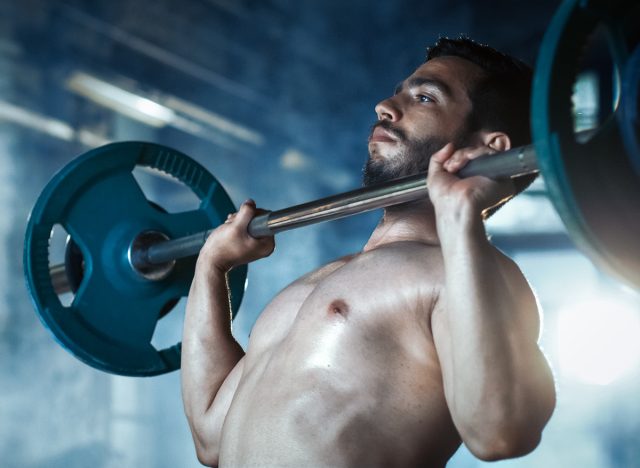
"Another big mistake and a caveat, especially a mistake for beginners, is mixing your cardio with your weight training," he says. "When you are getting started, and your goal is fat loss, and you're not at a point in your body composition that you're happy, it's not exactly the most advantageous thing to do. And the simple reason is you're mixing energy systems. You're putting emphasis on your cardio for 30 seconds, but it's taking away from the emphasis on your resistance training for 30 seconds and vice versa," he explains.
"So the emphasis on your resistance training is taking away from your cardio. You're not able to get into that comfortable zone where you're actually oxidizing fat as well. Even though your grandiose ultimate calorie burn is very high, you're putting yourself in a spot where you're really just squeaking out a little bit. It's almost like you're becoming a jack of all trades, master of none, and you're getting about 70% effectiveness in each category. So try separating. Have a very clear line of delineation between your resistance training and your cardio, at least until you become more experienced."
RELATED: The One Superfood Worth Eating Every Day to Boost Metabolism, Top Nutritionist Reveals
Not Having Fun
This last one, "arguably the most important when it comes down to sustainability." is having fun. "The best way that you can do cardio is by doing something that you don't realize you're doing cardio with. So what I mean by that is throwing a backpack on and going for a hike with a friend or going out and playing soccer or football or something, your cardio is going to be in that zone that you want it to be, and you're going to have fun, and it's not going to feel like work. The moment it becomes miserable, the moment it goes into a different region of your brain and it's categorized and filed into an area that you don't wanna tap into unless you need to, and you've created a terrible Pavlovian response with it," he points out.
"I enjoy running. Running isn't a chore for me. That's why I choose to do it. If I choose to do other forms of cardio, it's not as fun. I like to hike. I like to throw a heavy backpack on. I like the grind of that, but I also like going with my family and throwing my daughter on my back and feeling a hike that way where it's a hard workout, but I'm enjoying time with my family and it doesn't feel like it. Trust me. That's going to be the secret sauce above all else." And if you enjoyed this article, take advantage of these 15 Quick Ways to Lose Body Fat Percentage in a Week.
